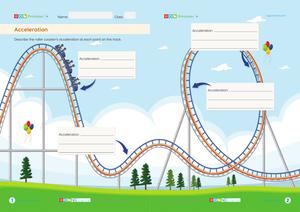Begin the lesson by discussing a relatable scenario: riding a bicycle and how pressing the pedals affects speed and direction. This helps students visualize acceleration in real-world terms.
Go to the LessonLearning Objectives
- Understand the concept of acceleration as a change in velocity.
- Describe how acceleration can occur in the direction of motion or in the opposite direction.
- Identify the relationship between force, velocity, and acceleration when riding a bicycle.
- Explain how changes in direction while maintaining speed affect acceleration.
Introduction and Hook
Direct Instruction
Explain the concept of acceleration as a change in velocity, using examples like speeding up and slowing down on a bike. Highlight how acceleration can occur in the direction of motion or opposite to it.
Guided Exploration
Engage students with the 'Forces in Action on the Football Field – Quiz Edition' video. Discuss how forces affect motion, speed, and direction using relatable sports examples.
Facilitate a discussion on how changes in direction while maintaining speed affect acceleration, using the example of turning a corner on a bicycle.
Hands-On Activity
Independent Practice
Check for Understanding
Review and Reflection
Facilitate a class discussion to review key concepts of acceleration, force, and velocity. Encourage students to share their findings from the hands-on activities.
Assessment and Extension
Conclude with the 'Acceleration' worksheet, focusing on roller coasters to assess students' understanding of acceleration in different contexts.
Encourage students to take the unit quiz to test their comprehension of the entire Forces and Interactions unit.
Try the Quiz





